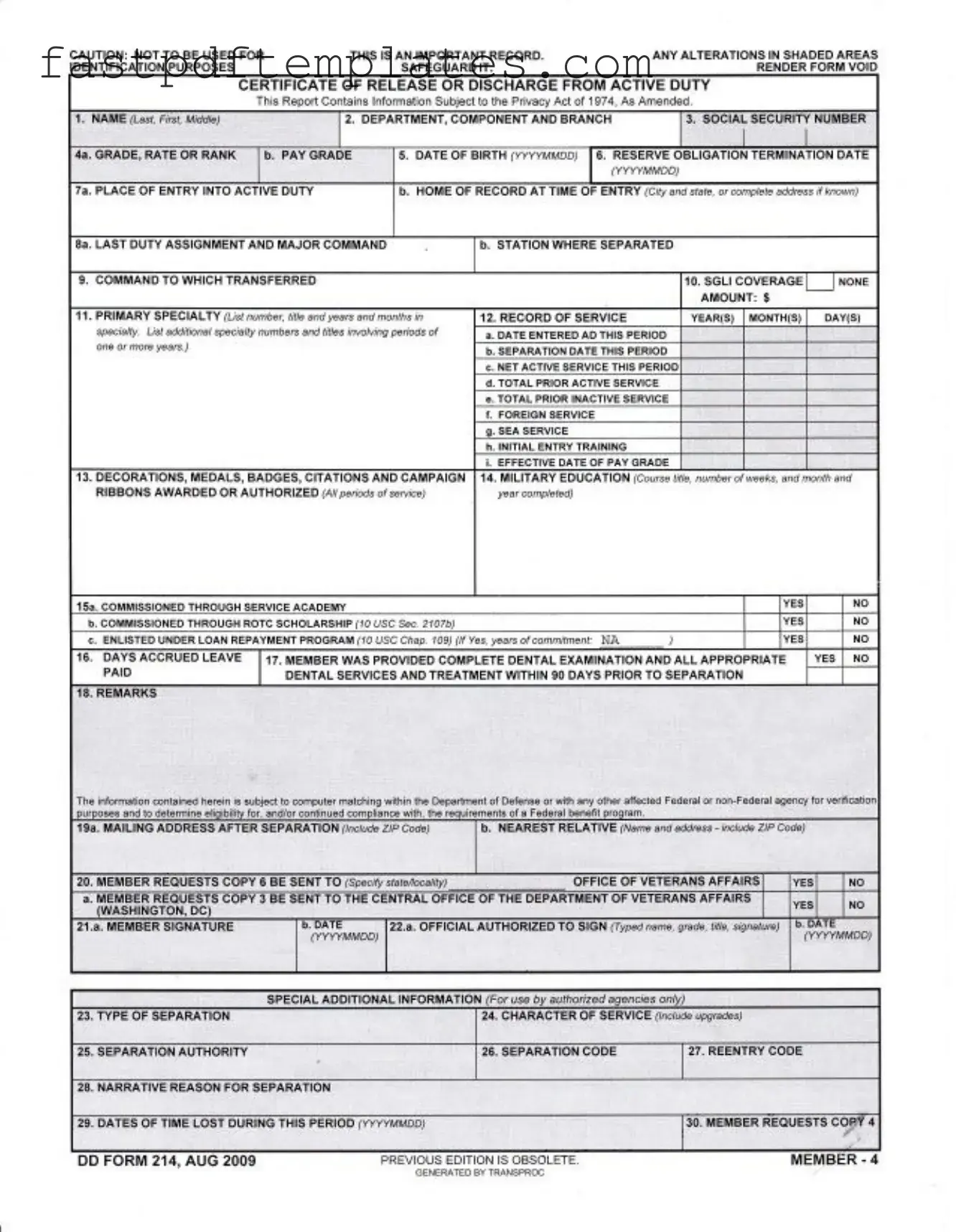The DD Form 256 is a similar document to the DD 214. It serves as a certificate of honorable discharge from the military. Like the DD 214, it provides important information about the service member's time in the military, including their service dates and character of service. However, the DD 256 is specifically for those who have completed their service honorably, making it a key document for veterans seeking benefits or employment opportunities.
The DD Form 257 is another document that relates closely to the DD 214. This form is used for individuals who are discharged under other than honorable conditions. It includes details about the member's service but emphasizes the nature of the discharge. While the DD 214 highlights the completion of service, the DD 257 serves as a record of a less favorable separation.
The Certificate of Release or Discharge from Active Duty (also known as the DD Form 214) is often compared to the National Guard Bureau Form 22. This form is used for members of the National Guard and provides a summary of their service. Both documents serve similar purposes in documenting military service, but the NGB Form 22 specifically addresses the unique aspects of National Guard duty.
The VA Form 21-526EZ is a claim form used by veterans to apply for disability compensation. It is similar to the DD 214 in that it requires information about military service, including dates and character of service. The DD 214 serves as supporting documentation for the VA Form 21-526EZ, making it essential for veterans seeking benefits.
The SF-180, Request Pertaining to Military Records, is another important document. This form allows individuals to request copies of their military records, including the DD 214. While the DD 214 is a record itself, the SF-180 is a means to access that record and other related documents, ensuring veterans can obtain the information they need.
The DD Form 215 is an important counterpart to the DD 214. It is issued to correct or amend information on a previously issued DD 214. If a veteran finds discrepancies or needs to update their service record, the DD 215 serves as the official amendment, ensuring that their military history is accurately represented.
The VA Form 21-534EZ is another document that parallels the DD 214. This form is used by surviving spouses and dependents to apply for VA benefits. Like the DD 214, it requires information about the veteran's service. The DD 214 provides the necessary proof of service that supports the claim for benefits under this form.
The DD Form 1300, Report of Casualty, is a critical document for families of service members who have died in service. While the DD 214 summarizes a veteran's service, the DD 1300 provides details surrounding the circumstances of a service member's death. Both documents are vital for understanding a service member's military history, but they serve different purposes in the context of military records.
The NGB Form 22A is similar to the DD 214 in that it summarizes the service of National Guard members who have completed their service. It includes essential information about the member's time in service, similar to the DD 214. However, it is specifically tailored to the unique structure of the National Guard, making it an essential document for those who served in that capacity.
The DD Form 4, Enlistment/Reenlistment Document, is another related document. It records the enlistment or reenlistment of a service member in the military. While the DD 214 reflects the end of service, the DD Form 4 marks the beginning of a service member's military journey. Both documents are crucial for understanding a veteran's military timeline.

